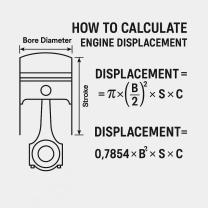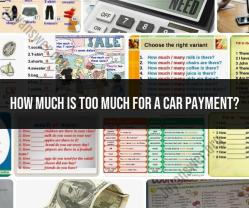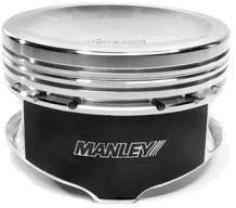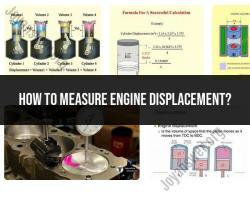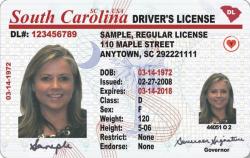How to purchase a car from a dealership?
Purchasing a car from a dealership involves several steps. Here's a step-by-step guide to help you through the car-buying process:
Research:
- Before visiting a dealership, conduct thorough research on the type of car you want. Consider factors such as make, model, year, features, and pricing. Read reviews, compare prices, and identify the specific make and model that meets your needs.
Set a Budget:
- Determine your budget for the car purchase. Consider not only the purchase price but also additional costs like taxes, registration fees, insurance, and potential financing charges.
Get Pre-approved for Financing:
- If you plan to finance your car purchase, consider getting pre-approved for a loan from your bank or credit union. This can help you understand how much you can afford and provide negotiating leverage.
Visit Dealerships:
- Once you have a clear idea of the car you want, visit different dealerships to check their inventory and pricing. Don't hesitate to test drive different models to get a feel for how they handle.
Negotiate the Price:
- Negotiate the price of the car with the salesperson. Be prepared to discuss the fair market value, and don't be afraid to negotiate for a better deal. Consider getting quotes from multiple dealerships for the same make and model.
Trade-In (if applicable):
- If you have a trade-in, the dealership may assess its value and offer a trade-in credit. You can use this credit toward the purchase of your new car.
Review Financing Options:
- If you haven't secured pre-approved financing, the dealership may offer financing options. Review the terms carefully, including the interest rate, loan duration, and monthly payments. Be aware of any additional fees.
Review the Contract:
- Carefully review the sales contract before signing. Ensure that all agreed-upon terms, including the price, financing details, and any additional agreements, are accurately reflected.
Understand Warranty and Additional Products:
- Dealerships often offer extended warranties, service plans, and other additional products. Understand the terms, coverage, and costs associated with these products before deciding whether to include them in your purchase.
Take Delivery of the Car:
- Before taking delivery, inspect the car thoroughly. Check for any damages or issues, and ensure that the features and accessories are as agreed upon. Ask for any necessary explanations or demonstrations.
Complete the Paperwork:
- Finalize the paperwork, including the sales contract, financing agreements, and any other required documents. Make sure you receive copies of all signed documents.
Register the Car:
- Work with the dealership to complete the registration process. This involves providing necessary documentation and paying any required fees.
Get Insurance:
- Arrange insurance coverage for your new car before driving it off the lot. Many dealerships require proof of insurance before finalizing the sale.
Enjoy Your New Car:
- Once all the paperwork is complete, and the car is registered and insured, you're ready to drive away in your new vehicle.
Remember to take your time during the process, ask questions, and don't feel pressured into making a decision. It's important to feel comfortable with the terms and conditions before finalizing the purchase.
- Navigating the Car-Buying Process at a Dealership: Understanding the Steps Involved in Purchasing a Car
Purchasing a car can be an exciting yet daunting experience. It involves significant financial considerations and requires careful decision-making. Navigating the car-buying process at a dealership can be streamlined by understanding the key steps involved.
Step 1: Conduct Initial Research and Preparation
Before stepping into a dealership, it's crucial to conduct thorough research and prepare adequately.
Gather Information: Research different car models, their features, specifications, and reviews. Utilize online resources, consumer reports, and expert opinions.
Determine Needs and Priorities: Clearly define your needs and priorities in a car. Consider factors such as size, fuel efficiency, safety features, and budget.
Set a Realistic Budget: Establish a realistic budget that aligns with your financial situation. Consider not just the purchase price but also ongoing costs like fuel, insurance, and maintenance.
Step 2: Visit Dealerships
With a clear understanding of your needs and budget, embark on visiting dealerships.
Narrow Down Options: Based on your research, prioritize a few car models that meet your criteria.
Schedule Test Drives: Arrange test drives for the shortlisted car models. This allows you to experience the car's performance, handling, and comfort firsthand.
Compare Prices: Obtain quotes from multiple dealerships to compare prices. Negotiate confidently, using research data and competitive offers to support your bargaining position.
Step 3: Finalize the Purchase
Once you've found the car you want and negotiated a satisfactory price, proceed with the finalization steps.
Review and Sign Documents: Carefully review all documents, including the sales contract, financing agreement, and warranty information. Ensure you understand the terms and conditions before signing.
Secure Financing: If financing is required, arrange the necessary paperwork and finalize the loan terms with the dealership's financial department.
Finalize Insurance: Obtain or update your car insurance coverage before driving the car off the lot.
Take Delivery: Inspect the car thoroughly before taking delivery. Ensure all agreed-upon features and accessories are included.
Remember, car buying is a negotiation process. Don't hesitate to ask questions, seek clarifications, and advocate for your best interests. By being informed, prepared, and assertive, you can navigate the car-buying process with confidence and make a well-informed decision.


